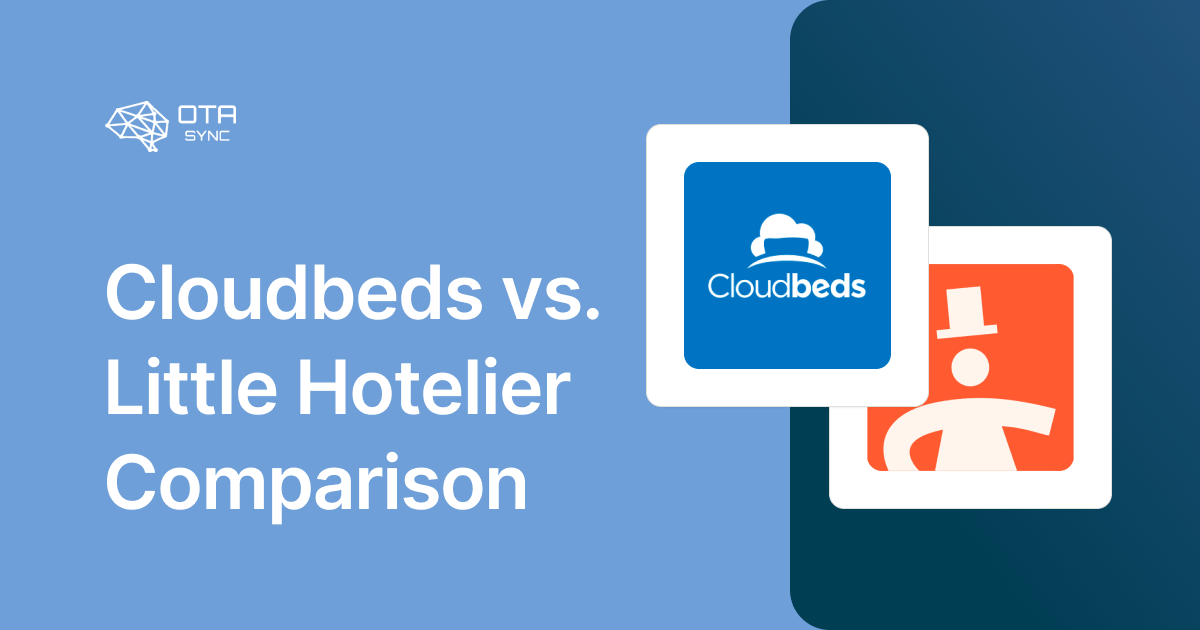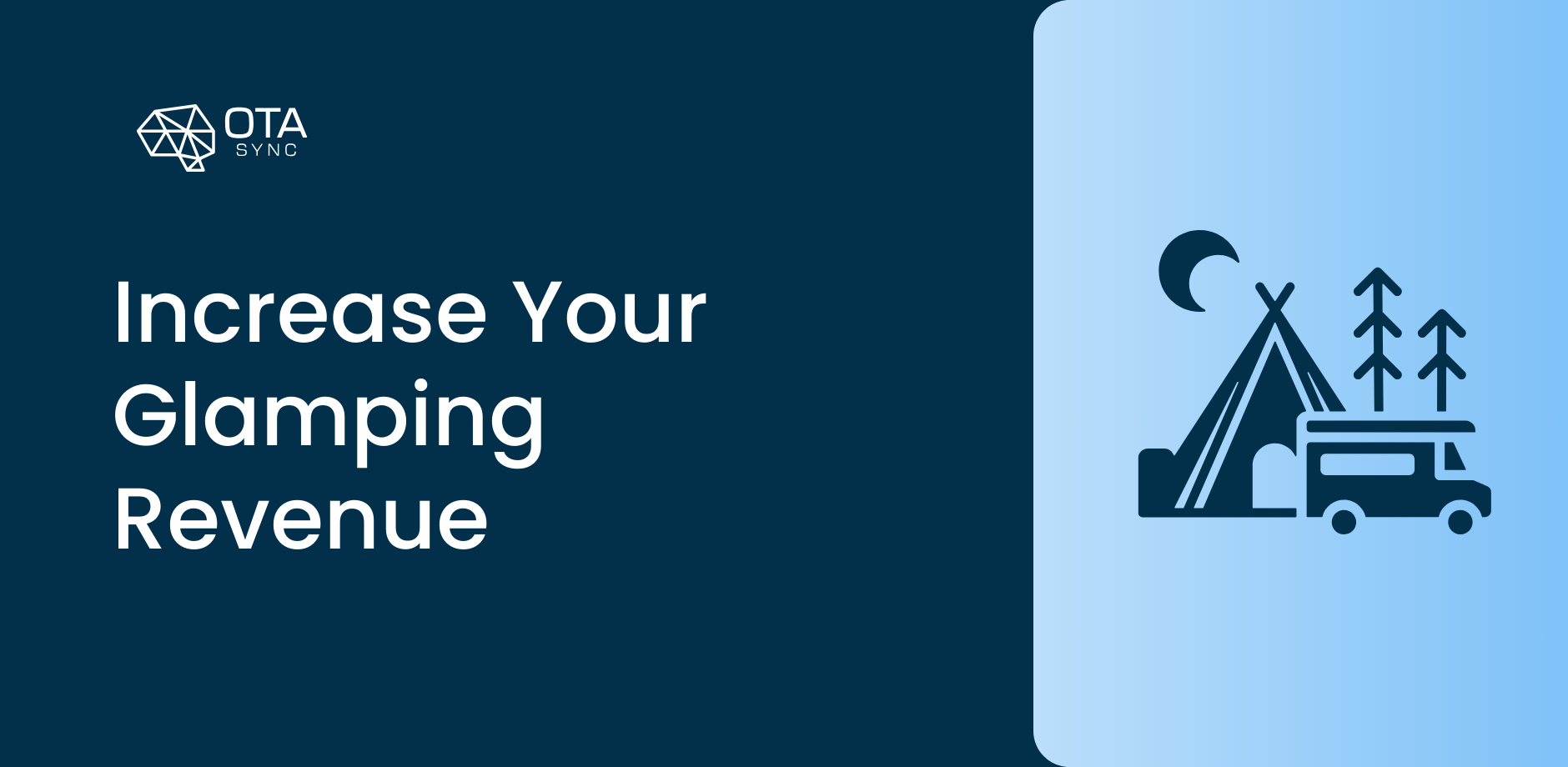The hospitality industry isn’t only about great places to stay in.
It is also about tech innovations and solutions that help hoteliers streamline and facilitate their day-to-day operations to provide better guest experience.
Actually, 80% of hoteliers implementing technologies noticed increased efficiency in basic operations.
Thus, using hospitality software can definitely be a big game changer, with Cloudbeds and Little Hotelier being 2 trendy solutions.
But which one might be better for your needs, property type, and budget?
Read on to see who wins the Cloudbeds vs. Little Hotelier duel.
Let’s dive in!
Cloudbeds: Overview
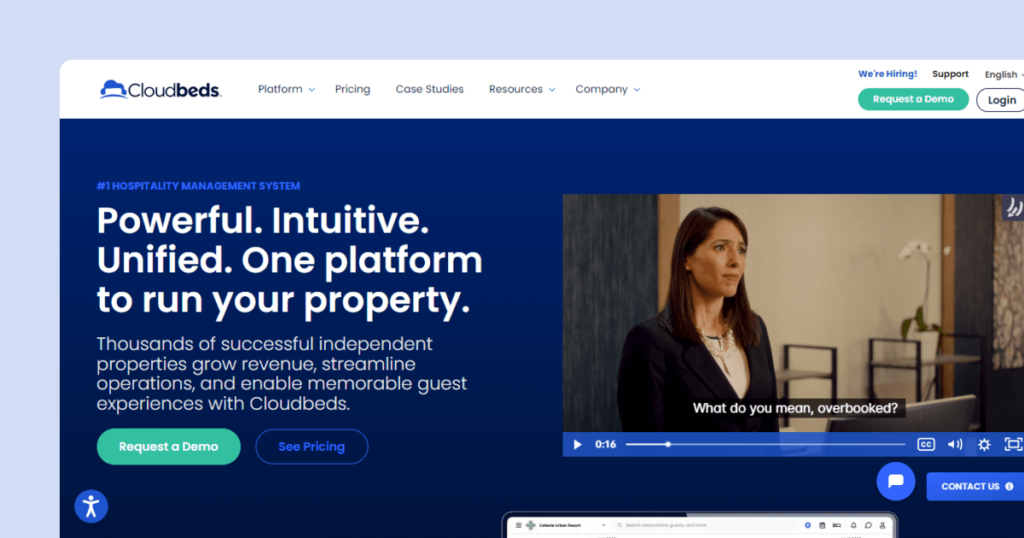
Cloudbeds is a cloud-based hospitality management system providing solutions to
hotels, B&Bs, inns, hostels, hotel groups, and vacation rentals.
Cloudbeds’ solutions belong to 3 categories:
- Solutions to increase revenue
- Solutions to delight guests
- Solutions to streamline operations.
As of recently, Cloudbeds introduced 2 new features:
- Cloudbeds Amplify – Provides a set of marketing tools to boost your online visibility, reconnect with former guests, etc.
- Whistle for Cloudbeds – Guest experience software providing tools to engage and enhance guest communication, upsell opportunities and offers, etc.
Regarding integrations, Cloudbeds offers a Marketplace where you can filter your search based on:
? Accounting & Finance
? Facilities & Operations
? Government Integrations
? Guest Experience & Communication, etc.
In addition, you can also use Cloudbeds API to create a custom integration.
Cloudbeds is available in 6 languages: English, Spanish, Portuguese, Thai, French, Italian, and German.
Cloudbeds: Key Features
1. Property Management System
The PMS provides tools to streamline and automate manual tasks from a centralized dashboard.
For example, you can use a drag-and-drop calendar to:
- Upgrade guests,
- See notes,
- Block room availability, and
- Update rates and room inventory across all your channels.
Within the dashboard, you can also find categories such as Reservations, Groups, House Accounts, Rates and Availability, Reports, etc.
2. Channel Manager
The Channel Manager distributes your inventory on numerous channels and helps you manage all your channels, rooms, and rates in one place.
Furthermore, it instantly syncs all the changes and updates.
It provides integrations with more than 300 booking channels, with zero commission from Cloudbeds for the channels you connect or the bookings you get.
Besides integration with booking channels, Cloudbeds also provides Metasearch advertising integration, access to GDS, and direct API connections.
2.1. Rate Management
Allows you to set different pricing for a specific channel and adjust the base rate.
In addition, it allows guests to compare your property prices on your website to your property prices on OTAs and other distribution channels.
2.2. Revenue Manager
Creates alerts to inform you about your competitors’ activity in the market via Cloudbeds’ Pricing Intelligence Engine (PIE).
Thus, it can:
✨ Help you track competitors’ rates.
✨ Set dynamic pricing and adjust your rates depending on the season, special dates, etc.
✨ Set rules and alerts based on occupancy, stay restrictions, etc.
✨ Provide analytics and metrics regarding ADR, booking sources, commissions, etc.
2.3. Payments
Thanks to integrated payment processing, you can set and specify multiple currencies, get credit card retrieval of your guests, etc.
In addition, you can see all the collected info in the Reservation section of the PMS.
Your guests can pay in a way convenient for them: credit cards, digital wallets, Pay by Link, etc.
3. Booking Engine
Helps you get more direct bookings by enabling you to choose different rate plans while allowing your site’s visitors to check and compare rates.
Furthermore, you can also offer add-ons, package deals, promotional codes, etc.
In order to facilitate tracking of your booking, the Booking Engine also provides statistics, reports, and analytics.
Cloudbeds: Pricing
Pricing plans are tiered, depending on the type of property you manage.

Cloudbeds: Pros & Cons
Pros:
? Has multiple integrations.
? Has a vast library of learning materials and guides.
? Has a robust set of features.
Cons:
? Customer service isn’t always efficient.
? Can get pricey when you include add-ons and fees.
? Can glitch and not sync the data properly.
Little Hotelier: Overview
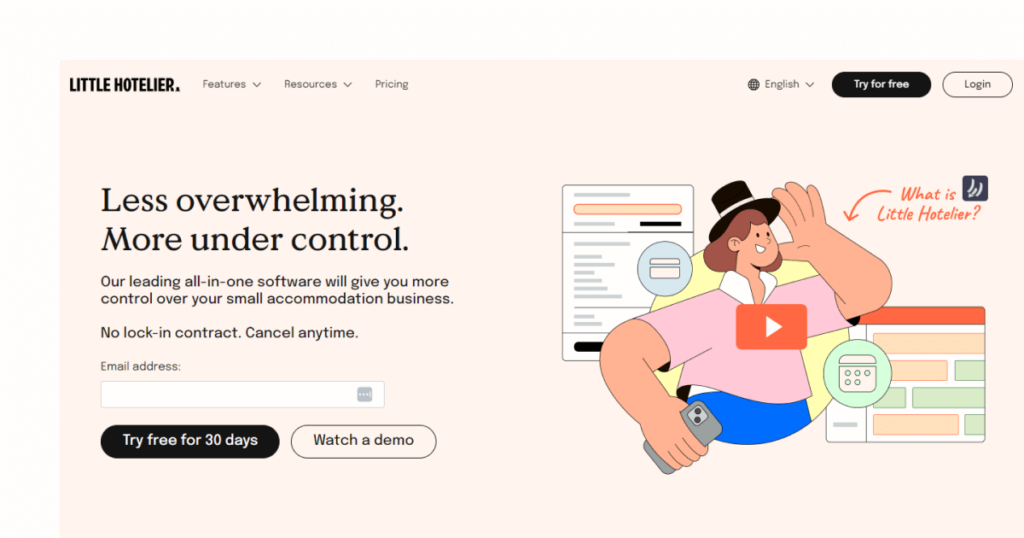
Little Hotelier is a hotel management software catering to smaller hotels, B&Bs, guesthouses, inns, motels, etc.
It provides features and tools to help you get more revenue while having more control and automation of your day-to-day operations.
In addition, Little Hotelier has a mobile app that is suitable for iOS and Android.
Thus, you can do check-ins and check-outs, create and change reservations, receive online payments, etc., on the go.
You can also set push notifications to find out when a new booking or a change pops up.
Regarding integrations, Little Hotelier provides plenty of integrations, but still fewer than some competitors.
Nonetheless, Little Hotelier enables you to connect with various apps, booking channels, and metasearch.
Little Hotelier: Key Features
1. Channel Manager
Provides real-time synchronization with various booking channels, and it allows you to:
- Set different pricing plans for each of your rooms.
- Set different distribution channels for each room.
- Choose what room types or room rates will get mapped to specific channels.
- Set availability restrictions depending on your strategy.
Furthermore, you can also manage and edit all of your bookings via a centralized calendar.
1.1. Payments
Unlike Cloudbeds, Little Hotelier doesn’t support POS or multiple currencies, but it does let you manage all of your payments via the centralized dashboard.
Your guests can pay with all major credit cards, including virtual ones, Apple, and Google Pay.
2. Booking Engine
Facilitates direct bookings through your property’s website, but it also makes it possible to use it as a direct booking webpage unless you don’t have the website.
Furthermore, you can also book directly through social media if you connect your social pages to your booking engine.
In addition, you can customize your hotel booking engine to match the style of your property.
Moreover, you can include add-ons, use promo codes, create discounts, etc.
Regardless of the channel you use, all the info will be in sync across your devices.
3. Front Desk Software
Provides features to simplify everyday operations, such as managing check-ins, allocating rooms, automating guest communications, processing payments, etc.
No matter which channel your guests come from, all the booking info will be in a centralized place.
In addition, the software provides a reporting functionality, enabling you to see which promotions, room types, rate plans, booking channels, etc., are your top performers.
You can download and export your reports in CSV files.
Moreover, you can also compare your property performance to your previous years’ performance.
Furthermore, you can view your Competitor Rates reports and your top 10 competitors’ rates in a single view.
You can even see how they set the prices for special events and holidays.
Little Hotelier: Pricing
Prices range between €109 to €249 per month for 50 rooms. Little Hotelier also provides a 14-day Free Trial.
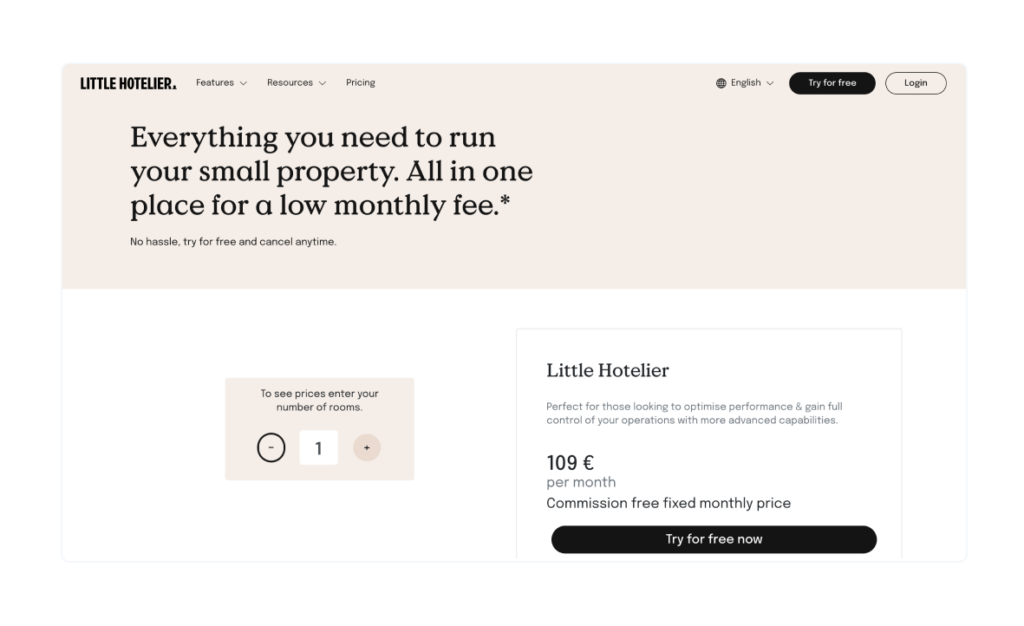
Little Hotelier: Pros & Cons
Pros:
? Easy to use.
? Suitable for smaller property types.
? A mobile app lets you manage bookings on the go.
Cons:
? Lacks multiple currency options.
? Customer support is hard to reach.
? Hard to cancel a Free Trial.
Cloudbeds vs. Little Hotelier – The Final Verdict
Before we wrap things up, let’s quickly recap each tool.
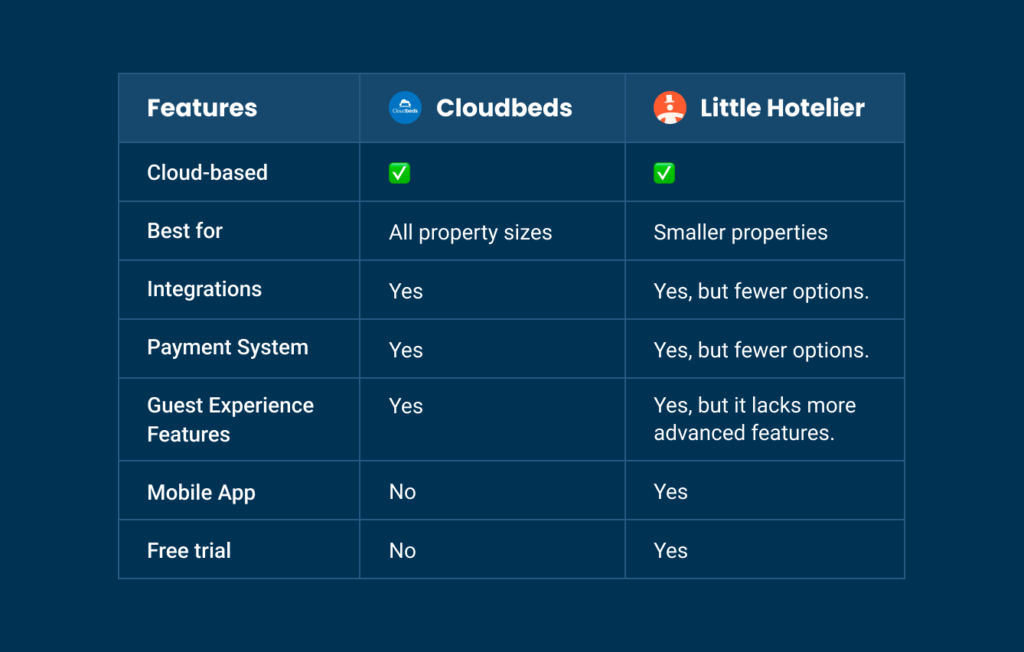
Deciding which tool might be the best fit depends on so many factors.
If you run a smaller property and don’t need super advanced CRM, Little Hotelier might suit your needs.
On the other hand, Cloudbeds might be your thing if you need more advanced features and run bigger properties.
But what if there is a solution that closes the gap between Cloudbeds and Little Hotelier and provides the best of both worlds?
Enter OTA SYNC.?
Not only does it address the full hotel management rather than a specific functionality, but it also provides a Guest App – fully customizable, so you can adjust it to your guests’ needs and offer them:
- Seamless online check-ins
- Chatting options
- Add-ons and extras to pamper them during their stay.
Furthermore, it caters to smaller and bigger properties and offers support in 15 languages.
OTA SYNC – An All-in-One Alternative
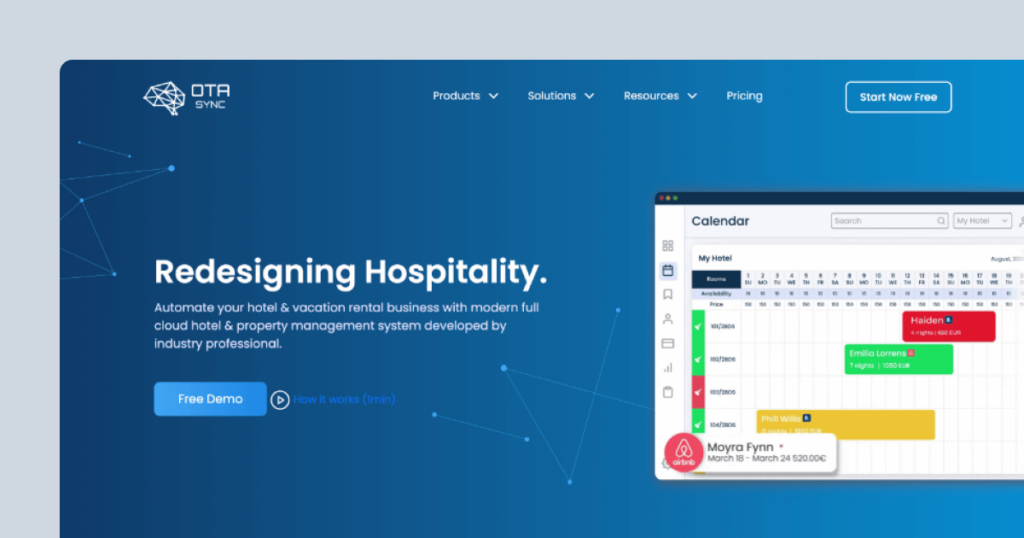
OTA SYNC is an all-in-one hotel property management solution aiming to facilitate and automate everyday operations without compromising guest experience.
Its robust features range from Channel and Property Manager tools over Booking Engine to OTA Payments and Guest App.
So, what’s in store for you if you go for OTA SYNC?
? Seamless onboarding without requiring an account manager’s assistance.
? A multi-property dashboard so you can manage multiple properties without switching from one account to another.
? A drag-and-drop calendar to show check-ins and check-outs, reservations status, etc.
? Fully integrated payment gateway that instantly processes transactions.
? Flexible tax and general settings specific to different markets.
? Plug and play revenue booster that allows the system to change sales and pricing settings independently, based on pre-set limitations.
? Multiple integrations with OTA channels.
? Advanced revenue, finance & in-hotel reports and analytics.
Ready to check what other cool features OTA SYNC provides you with?
Sign up for OTA SYNC today and transform the way you run your properties!
Keep Learning
When Is The Right Time to Change Your PMS?
5 Things That Travelers Check Before They Book a Hotel Online
